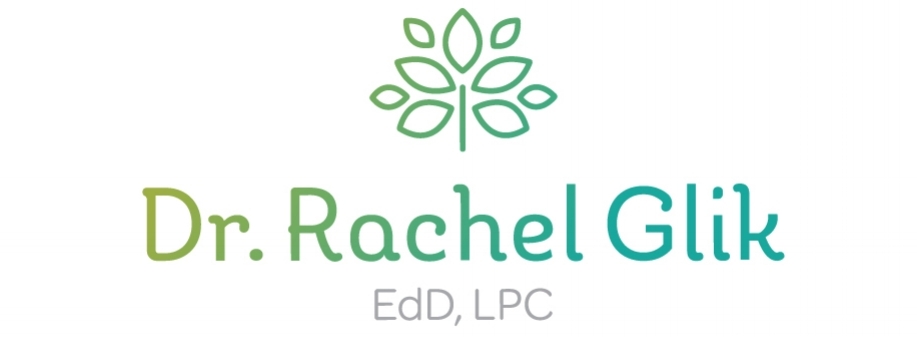As you lean into the four pillars, you and your partner create a “sanctuary” together where you and your love can grow stronger, deeper, and more joyful.
It's Never Too Late to Build a Stronger Bond with Your Father: Tips for Adult Children
The Stress of Family Gatherings: 5 Tips for Calm and Balance During the Holidays
Empty Nesting: The Upsides, Downsides and Tips for a Fresh Chapter Mindset
I’ve come to understand empty nest as a verb, “empty nesting” I like to call it. The letting go process is fundamental to parenting and continuous. Some empty nest experiences create such emotional turmoil and sadness that parents face empty nest syndrome. Each person needs to find where they want to direct that new energy but I think the first step is to frame this stage of life with a FRESH CHAPTER MINDSET.
Both Parents Face Risk of Postpartum Depression: 5 Steps To Mental Well Being For All
Both parents can face perinatal depression, not just the one who gave birth. Allow yourself to love and care for yourself. You are worth it and there is nothing better for your baby. Here are 5 steps to guide you to mental well being and happiness. Not just if you’re severely depressed–These steps for mind body and spirit are preventative and relevant even if you are mildly depressed or anxious.
The Four Pillars For Long-Lasting Love
After three decades of counseling struggling couples, and after experiencing transformation within my own marriage, I've been able to identify the core components of a lasting and fulfilling relationship. I'd like to introduce you to what I have found unshakeable over time, what I call The Four Pillars.
The 3 Major Sources of Thanksgiving Stress: Self Care Tools for Each One
The Parent-Adult Child Dynamic: Sources of Tension and Healing the Distance
Discontent between parents and their adult children has been around for centuries. In today’s times, however, the pursuit of personal growth and happiness among millennials is empowering the breaking of cycles and setting of new boundaries. The younger generations don’t want to follow the status quo and the older generations don’t understand why their children don’t appreciate and respect their elders' ways, contributions and rights.
Why Adult ADHD Is Rising: 4 Tools To Embrace The Gifts ofYour ADHD Brain
So many adult clients I meet with have no idea that their ADHD brain is impacting the way they think, behave and feel––and how they show up in their relationships. I have a keen eye for picking up on the signs.The first step of making the most of your own neurology is to understand it. Learn about yourself and the way ADHD shows up in your life — the challenges and the impressive gifts!
Families Making Up After Pandemic Fights
Some families grew closer over the pandemic while others suffered rifts. Differing views on vaccines, masks and testing has made for some tricky family dynamics and sometimes hostile conversations. Without the pandemic as an excuse anymore for keeping distant, the pressure is on to address these emotional issues. Here are some steps for repairing your relationships and moving forward.
Mental Health Risks of Retirement: Tips for Thriving Not Declining
There is a curious and common paradox about retirement. Those who retire into a life of ease often find themselves declining in their physical health and mobility, and often face feelings of loss, depression and anxiety. So what is the solution here? How do we approach this stage of life, actually feeling more alive and well, not less so? How do we thrive in our retirement?
Dry January and the "Sober Curious" Movement
Dry January and Sobriety are growing in numbers particularly for the millennials and gen Zers. If you’re considering making some changes to your substance use, whether that be for the sake of a healthier, more mindful, fulfilling life–or if it’s a matter of life and death–here are some suggestions to help keep you safe and successful on your “Sober Curious” journey.
Relationship Tips for Empty Nesters
We continue to evolve and grow as people along the parenting journey and most couples grossly underestimate the need to continually invest in their togetherness, to address their differences and areas needing repair. So how can couples build a strong empty nest for themselves, whether the kids have flown the coop or are preparing to do so?
7 Strategies to Handle Covid Re-entry Anxiety
Overcoming Mom Guilt: From Perfect Parenting to Good Enough
Retail Therapy: Can Shopping Really Be Therapeutic?
“Retail therapy” is often joked about, typically laced with a hint of guilt from seeing shopping as a vice, a weakness, an escape, a consolation from failure or rejection, or perhaps an addiction. No doubt, some of these are all too true. However, as many stores have reopened, after months of quarantine, we are seeing more keenly how a classic shopping spree can actually be good for you. And hey, I’m not just saying this because my husband is a thoroughbred in a 5th generation family clothing business.
I clearly believe that making a purchase should and can never replace therapies and life endeavors that help us heal and feel fulfilled long term. Yet, we shouldn’t dismiss some of the mood lifting and positives that give the term retail therapy an actual backbone.
SOME POSITIVES
Here are some therapeutic benefits of shopping, of course keeping in mind moderation and spending within your means.
Awakening Kindness, Towards Yourself and Others
Especially if you allow yourself to receive without shame, treating yourself to an item that brings you joy can be an act of self care and kindness. What we know about self kindness is that it creates the foundation for our capacity and desire to show kindness to others.
Relieving Stress
Any action in which we engage, when fully present, allows our nervous system to regulate and relax. There’s a term I love that Deb Dana coined in her book “They Polyvagal Theory in Therapy,” called glimmers. These are experiences that help us feel safe and connected. For many, shopping makes their glimmer list. Retail shopping can be useful and empowering especially when framed as a tool when triggered. To learn more about triggers and glimmers, Andrea Glik, LMSW writes a succinct summary in her blog, “The Nervous System, Triggers and Glimmers!”
Gaining Control
With so much happening over which we can feel little control, in our world and in our lives, the power in making a consumer choice can tip us into the empowerment side of our human experience. Once we feel more in control from shopping, this can shift our consciousness as we approach and face the challenges in our lives.
Engaging in Creativity, Aestheticism and Self Expression
Art and creativity provide a unique pleasure of their own and lift our spirits. Shopping for clothing can be a creative experience and expression of yourself. A piece of clothing opens gates for creating outfits, thinking of future events to which you might wear it, for ways you can express your ever-changing self. Some of our purchases can also serve as a gateway to other creative outlets. For example, if we purchase cooking, gardening or carpentry equipment, the possibilities become endless.
Human Connection
Entering the marketplace is often much more than simply making a purchase. We are tribal, social creatures and we seek every which way to make a connection. Whether it’s shopping with your mom, child or friend, meeting new people as you shop, or getting the feel of a town you’re in as you shop shoulder to shoulder, we fill up by being with and around people. Shopping online is fine, but cannot replace the brick, mortar and human experience.
Ritual to Mark Milestones and Transitions
Let’s start with back-to-school shopping. What a marker of growth and new beginnings. Maybe it’s for a wedding, or a new job, or even a traditional practice of shopping for a holiday. All of these can come with warmth and joy, helping us to make memories and feel connected and safe with what’s familiar. Many find buying new items as a therapeutic tool when transitioning in life, whether that be a divorce (e.g., new bedding), going off to college or moving into a different career or personal stage in life.
STAYING BALANCED
I would feel remiss if I didn’t spend a little bit of real estate here on tips for protecting yourself from the peril of consumption, of turning outside oneself for fleeting and quick fix happiness. We all know this on some level, but it can take great effort to seek fulfillment internally versus externally. Here are some tips to keep from contaminating your retail therapy behaviors.
Consciousness is key. Claim the Why in your shopping.
Perusing the list above, see what stands out to you as some of the positive reasons shopping is joyful for you. Then, let that intention permeate your mind and heart. This way, your shopping rises into the proactive versus reactive category. Decide “the why” that serves you best long term.
For example, we know that the better our mood is, and the better we feel in our bodies and about ourselves, we feel lighter, more connected to our power and more likely to shine our light to the world. So when shopping for yourself, keep awareness of the perpetuity in your indulgence, making it directed also towards being more sharing with others.
Set Some Limits
Whether that be about time or money, emotional or physical energy, decide ahead of time what feels like a balanced degree of emphasis on your shopping. We enjoy the benefits to the degree that we don’t lose total control.
Shop For Others
We can counterbalance the addictive perilous effects of shopping by channeling our love of consumption towards sharing with others. It’s a win win.
Check Yourself for Signs of Shopaholism (Compulsive Spending)
We are all at risk as human beings for allowing people and things to become our source, to become compulsive with those things that bring us physical pleasure. Journaling, pausing, listening within, speaking with a friend or therapist can help to monitor your own sense of balance. Check out this article from Psychology today for a checklist of signs to see if your spending is out of control.
Let Yourself Receive
Many have great shame in wanting and receiving in life. There’s no blessing in anything that we have when we feel guilty about it. Let yourself enjoy the experience, don’t feel guilt. The shame only makes us feel empty and then makes us more likely to try and fill up the void with more things.
Who Cares About Work? Tips for Motivation and Meaning During the Corona Crisis
People First: Keeping Social Distancing From Becoming Social Isolation
The Science of Optimism: Our Lives Depend On It
So who doesn’t believe in positive thoughts, in leading life from an optimistic outlook? More than just a good idea, research now confirms that we can say, “Our life depends on it!” Recent longitudinal studies have tied greater optimism to a lower risk of developing heart disease and other chronic ailments. Greater optimism has also been shown to correlate with living longer.
Social Media Identity Syndrome: How to Create Boundaries With Your Online Identity and Live Your Most Authentic Life
With social media growing as a tool to promote oneself and connect with others, many are finding themselves out of balance from the experience of building a public persona. I like to call this “Social Media Identity Syndrome.” To begin with, we are wired and socialized to care about how others perceive us. Today’s constant exposure to the opinions of the external world—by way of likes, comments, followers—puts us at greater risk for losing touch with the visceral experience of being an authentic human being, and having real and personal connections (especially with ourselves).
Yes, social media is a fact of life in the 21st century, a positive fact even—in business and marketing, and in our social and spiritual arenas. But too much of a social media identity can take a toll on our time, the quality of our lives and our relationship with who we are. So how can we navigate the boundaries of a social media identity and stay balanced? How can we express and expose ourselves on social media—share wisdom and stay relevant—and at the same time safeguard against FOPO (Fear of Other People’s Opinion), which social media savagely feeds?
Step 1: Know Thyself: A Social Media Identity Syndrome Questionnaire (SMISQ)
Understanding the potential side effects of building your public persona offers a baseline from which to check yourself. Ask yourself honestly, “How many of these dangers ring a bell?” (Big DING if it resonates, little ding if there’s a hint of truth.)
Do you find yourself spending too much time crafting your posts at the expense of spending quality time on what you value most?
Do you find yourself frequently, and repeatedly, checking the reactions to what you’ve posted? Or what others have posted?
Do you find the quality of your here-and-now experiences diminished from being preoccupied with making sure you document what is happening and with whom?
Do you find yourself distracted and having a harder time being in the present, being still and comfortable in your own skin?
Do you notice your self worth going up and down the ladder based on the responses to your posts?
Do you feel guilty, anxious or FOMO (fear of missing out) if you don’t post?
Do you struggle with comparing yourself with other social media handles—what they’re posting or doing in their lives?
Do you rethink or doubt how you are living your life and the choices you are making based on what you see others doing or posting?
Do you feel less at peace with yourself, or perhaps empty inside, after posting or perusing others’ posts?
Step 2: Create Good Boundaries Between the Real You and Your Social Media Identity
Here are some simple (not necessarily easy) tips to encourage living your life and connecting with others based on your authentic self (and protect yourself from the identity-eating social media monster).
PAUSE BEFORE POSTING, IDENTIFY YOUR “WHY.”
Take a deep slow breath and check your consciousness, continually. Ask and re-ask yourself the questions from the questionnaire above. Are you posting for external validation, to impress, to feel more worthy or respected by others? Or are you posting because it’s in line with your personal mission or the difference you want to make, whether it’s through your words or your services? Or perhaps your “why” is to stay connected with people who are important to you? Or to express your creativity and have some fun? Base your posts on the “why’s” that feed your inner being. Your branding will come through more purely and strong.
We must fight within our minds to lead from a place of how I want to influence versus be influenced based on others’ reactions to me. When you catch yourself seeking outside validation or coming from guilt or shame, then resist that urge to post at all right then and redirect yourself toward an activity that expresses your most authentic self. Or pause and redirect your mind to a reason for posting that feels more fulfilling and true for you.
I recently reread one of my favorite books, The Secret, by Michael Berg. In this short read, he shares that the key to true happiness comes from the experience of growing more and more into a being of sharing. Before I post on my Instagram handle (or speak publicly, meet with clients or write blogs), I do my level best to remember to check in and make sure to align myself with this ultimate purpose. Not for the outcome, or to even have an identity at all, but so that I can grow myself more into a being of sharing. That’s it, this singular focus changes everything, and is really all we need.
CREATE BOUNDARIES TO PREVENT LOSING YOURSELF
Some concrete ideas for protecting yourself from being swallowed up by the social media identity impulse include the following:
Resist the urge to keep checking your accounts for likes, follows, etc.; and the same for feeling the pressure to post with every experience. Take a deep breath and redirect your energy within yourself, when you feel the impulse to the external.
Create a true self mantra, and repeat again and again. Such as, “The power within me is greater than I can ever imagine. All I need, the wisdom, the guidance, the blessings can be found within, not outside of me.” or “I am safe to be who I really am. The joy and fulfillment I seek comes from living the truth of my inner being.”
Be Yourself, on and off the screen. Take the risk of being naturally you and expose who you are as a real person. Our daughter, Andrea, aka @somaticwitch, told me yesterday that she tries to keep it more personal by using her first name as much as she can. Though it’s a professional handle, it helps to interact in ways that keep her feeling like a human not a brand.
Nourish what keeps you grounded and fulfilled. Make your list of “Something in my life is not right unless I’m ____________________.
As an example, for me, “Something in my life is not right unless I’m… running, writing poetry, baking, studying Kabbalah, journaling, reading before bed, immersing in nature, listening to music up loud in my house, stretching, making new friends, time with my family.” You can check out this list of resources I use for myself and clients as a good starting off point to identify what it is that makes you feel whole, connected and alive in your own skin.
Sending my well wishes from me to you,
Rachel, aka @counselor4soulsearchers



















